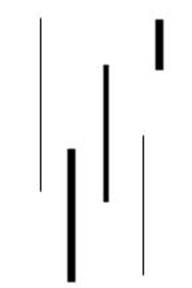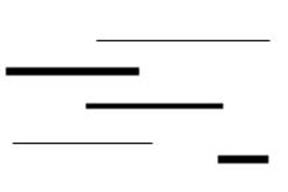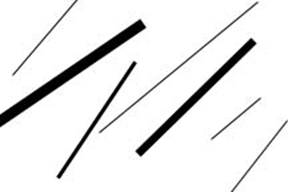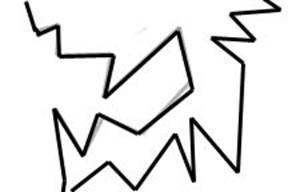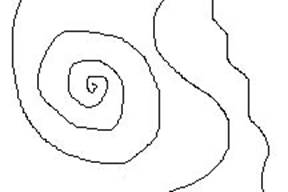David Carson (born September 8, 1954) is an American graphic designer, art director and surfer. He is best known for his innovative magazine design, and use of experimental typography. He was the art director for the magazine Ray Gun, in which he employed much of the typographic and layout style for which he is known. In particular, his widely imitated aesthetic defined the so-called "grunge typography" era
Carson graduated with “honors and
distinction” from San Diego state university, where he received a BFA degree in
sociology. A former professional surfer, he was ranked #9 in the world during
his college days. Numerous groups including the New York Type Directors Club,
American Center for Design and I.D. magazine have recognized his studio’s work
with a wide range of clients in both the business and arts worlds. Carson and
his work have been featured in over 180 magazine and newspaper articles around
the world, including a feature in Newsweek magazine, and a front page article
in the new york times . London-based Creative Review magazine dubbed Carson
“Art Director of the Era.” The American Center for Design (Chicago) called his
work on Ray Gun magazine “the most important work coming out of America.” His
work on Beach Culture magazine won “Best Overall Design” and “Cover of the
Year” from the Society of Publication Designers in New York.
Carson’s first book, with Lewis Blackwell,
The End of Print, (forward by David Byrne) is the top selling graphic design
book of all time, selling over 200,000 copies, and printed in 5 different
languages.The work featured in The End of Print is the subject of various
one-man exhibitions throughout Europe and Latin America,Asia and australia.
Carson’s other titles include 2nd Sight, Fotografiks
(with design historian Philip Meggs). He has two recently released books, TREK
and The Book of Probes with Marshall McLuhan. David is also art director for
the Mcluhan estate(“the medium is the message”).
Carson lectures extensively throughout the
world, as well as at colleges throughout the U.S., including Cranbrook, ART
center, Notre dame, RISD and Cal Arts. he has had numerous one man exhibitions
of his work worldwide, and has spoken at over 100professional symposiums,
including “Designer As Editor” at the Design Institute in Amsterdam. He teaches
a week long workshop at the school of visual arts in nyc each summer.
The International Center for Photography
(NY) singled out Carson as the “Designer of the Year” for his use of
photography and design. Print Magazine proclaimed his work “Brilliant,” while
USA Today described it as “visually stunning,” adding that his design of Ray
Gun Magazine “may actually get young people reading again.”
Typography, a title published by Graphics
magazine (NY), lists Carson as a “Master of Typography.” I.D. magazine chose
Carson for their list of “America’s most innovative designers”. A feature in
Newsweek magazine said of Carson “he changed the public face of graphic
design”. The graphic design publication Emigre devoted an entire issue to
Carson, the only American designer to be so honored in the magazine’s history.
And in April 2004, London based creative review magazine calls David, “the most
famous graphic designer on the planet”. David recently picked up 4 gold awards
at the Charleston ADDY awards, including a “special judges award” for
“professionalism”.
In the past few years, Carson has branched
out into film and television to direct commercials and videos. He directed the
launch commercials for Lucent technologies and teamed up with william burroughs
in Carson’s short film, “The End of Print”. He also collaborated with Harvard
Business School professor John Kao on a documentary entitled “The Art and
Discipline of Creativity.” David designed the worldwide branding campaign for
Microsoft, as well as the worldwide advertising for Giorgio Armani (Milan). He
has appeared in advertisements endorsing Apple Computers, Samsung monitors and
various paper companies. Carson has art directed and designed Surfer, Tw
Skateboarding, Tw Snowboarding, Beach Culture, and Ray Gun magazines. He has an
extensive list of international clients: Nine Inch nails, Toyota, Mercedes
benz, Bank of Montreal, Microsoft, Quicksilver, Meg Ryan, David Byrne, Bush,
Pepsi, and Xerox.
David is featured in both “The History of
Graphic Design” by Philip Meggs, as well as”The Encyclopedia of Surfing” by
Matt Warsaw.
He designed a special issue of Surfing
Magazine titled “Explorations” which came out in july of ’04. He also recently
directed a television commercial for the progressive UMPQUA Bank in Seattle,
Washington.
David’s work continues to be subjective and
largely driven by intuition, with an emphasis on reading material before
designing it, and experimenting with ways to communicate in a variety of
mediums. Carson remains a hands on designer, keeping his studio small and
mobile.
David Carson art work
Shukor Yahya
About
Shukor Yahya
Shukor
Yahya is a Contemporary Artist and a Graphic Designer with 35 years of
experience in Graphic designing and painting. His first degree is a Bachelor in
Graphic Design from University Teknologi MARA (1976).After his
graduation he was attached to McCann Erickson as a visualizer and a JuniorArt
Director. Then he joined Idris Associates before being snapped up by
WingsCreative Consultants, which was later bought over by BBDO International. Therehe
worked with Tan Sri Lim Kok Wing as an art Director until 1984. He was also a
Creative Director at Merit Design Consultants, Kuala Lumpur. In 1988 the
Rotatry Club International sponsored him to stay in Melbourne as an Artist in
Residence at Raja Azhar Gallery at Franklin Street, Melbourne, where he hold
two solo exhibitions. Thus gave him a fruitful sabatical.From 1989-1998 he was
the head of Packaging Design unit at Bates Asia.When he left advertising he
went to pursue his post graduate study and earned hisMaster (MA) of Art and
Design Education from DeMontfort University, Leicester, the UK in 2002.After
graduated he taught at the department of Media Study, Faculty of SocialScience,
University of Malaya until 2004. He had travelled in many countries includingSingapore,
Thailand, Indonesia, Australia, India, Bangladesh, South Africa, Greece,United
Arab Emirates, Saudi Arabia, England, Wales, the USA and Switzerland. When he
started painting seriously he revived the art of Kufi square and quickly earned
a reputationfor his unique approach in painting. Because of his individuality
in style many art enthusiasts are mesmerized by what he had produced. Beginning
2010 he has signed a five years agreement signifying his partnership with CARAN
d'ACHE based in Geneva, Switzerland.I refuse to repeat the works of the old
masters as we're already having a stalemate in introducing a new art movement
these days.So, here i am creating something new and contemporary and modern
appealing to many walks of life. Less
Education:
Shukor
Yahya obtained a Master of Arts in Art and Design Education degree from De
Montfort University, Leicester, UK. and he has participated in many group and
solo exhibitions locally and oversea.
Events:
Eastern
Art Price
Park Lane Hotel, Piccadilly, London.
March, 2010.
Baselworld, Switzerland.
18-25th March, 2010.
Kuala Lumpur Convention Center, World Islamic Economic Forum (WIEF),
18 -19th May, 2010.
Psyche of Art @ Rain Forest, Kuala Lumpur.
4th- 19th July, 2010.
Salon du Livre Ancien at Paris, France
28th of April to the 12th May, 2011.
Park Lane Hotel, Piccadilly, London.
March, 2010.
Baselworld, Switzerland.
18-25th March, 2010.
Kuala Lumpur Convention Center, World Islamic Economic Forum (WIEF),
18 -19th May, 2010.
Psyche of Art @ Rain Forest, Kuala Lumpur.
4th- 19th July, 2010.
Salon du Livre Ancien at Paris, France
28th of April to the 12th May, 2011.
Shukor Yahya artwork
Faezal Muniran
Faezal Muniran was born in Kuala Lumpur, Malaysia in 1978. He studied graphic design and illustration before exploring digital media for his postgraduate study. During daytime he is a lecturer in Universiti Teknologi MARA specializing in new media, comics and illustration. While at night he is indulging himself as comic artist working on his personal and commissioned project. In 2007, he won a grant in the Digital Comic Competition for his comic project ‘The Time Mission’ and in January 2008 he was one of the winners in the Cerita Rakyat Malaysia (Malaysian Folklore) Creative Competition with his character design for ‘Si Bongkok and the Warriors of Tanjung Puteri’ organized by MSC and MDEC Malaysia. He is currently finishing his graphic novel and digital comic for ‘The Time Mission Vol. 1’ and a children’s sci-fi and fantasy e-comic adventure entitled ‘Dunia Asing’. He is also researching on how comics and graphic novels can help with reading literacy among school children in Malaysia.
PieR Gajewski was born on the 13th November 1976 in France.
He graduated from the Ecole Supérieure de l’Image (Comics Art School of Angoulême – France) and was in residency at the Author’s House of Angoulême for 2 years. He loves to draw and to think about different ways to make comics. He took part to many international comics book (as Comic Book Artist – Tribute to Will Eisner (USA), Sturgeon White Moss (UK)) and keeps on questioning the comics media via his graphical poems. For some months he has been illustrating articles for the French press and he’s currently working on an exhibition of drawings and photos of cities with Carole Sionnet.
Art Work By faezal Muniran and Pier Gajewski
Faezal Muniran
Faezal Muniran was born in Kuala Lumpur, Malaysia in 1978. He studied graphic design and illustration before exploring digital media for his postgraduate study. During daytime he is a lecturer in Universiti Teknologi MARA specializing in new media, comics and illustration. While at night he is indulging himself as comic artist working on his personal and commissioned project. In 2007, he won a grant in the Digital Comic Competition for his comic project ‘The Time Mission’ and in January 2008 he was one of the winners in the Cerita Rakyat Malaysia (Malaysian Folklore) Creative Competition with his character design for ‘Si Bongkok and the Warriors of Tanjung Puteri’ organized by MSC and MDEC Malaysia. He is currently finishing his graphic novel and digital comic for ‘The Time Mission Vol. 1’ and a children’s sci-fi and fantasy e-comic adventure entitled ‘Dunia Asing’. He is also researching on how comics and graphic novels can help with reading literacy among school children in Malaysia.
PieR Gajewski was born on the 13th November 1976 in France.
He graduated from the Ecole Supérieure de l’Image (Comics Art School of Angoulême – France) and was in residency at the Author’s House of Angoulême for 2 years. He loves to draw and to think about different ways to make comics. He took part to many international comics book (as Comic Book Artist – Tribute to Will Eisner (USA), Sturgeon White Moss (UK)) and keeps on questioning the comics media via his graphical poems. For some months he has been illustrating articles for the French press and he’s currently working on an exhibition of drawings and photos of cities with Carole Sionnet.
Art Work By faezal Muniran and Pier Gajewski

























.jpg)

.jpg)



.jpg)






















